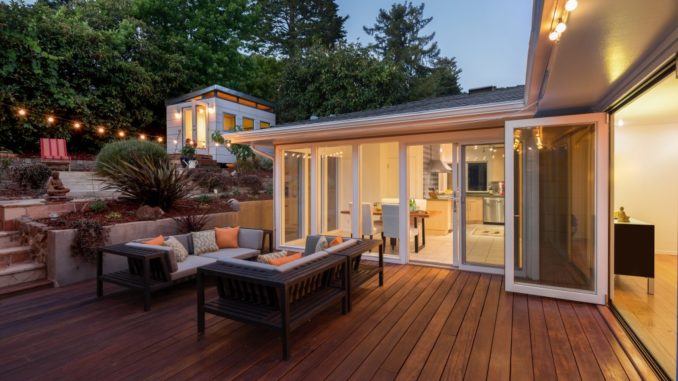
Indoor-outdoor living is one of the hottest trends in homes today, and as such, glass panels are replacing concrete exterior walls, providing panoramic views of cityscapes, lush tropics, or expansive seas. And of course, such windows also let in plenty of natural light, which is important for all homeowners.
But on the flip side, oversize windows can heat up the interiors of a home too much. During summers, you may be forced to run your A/C all day because of the sweltering heat coming from your glass walls and windows. Fortunately, there are fast and easy solutions to that.
Below are ways to keep your home cool without sacrificing natural light.
Window Film
If you don’t want to block the views from your windows, use high-quality privacy window film. It is basically the reflective film that makes the inside of your home invisible from the outside. They also help block against solar heat gain, reduce glare, and prevent UV exposure.
Window film comes in various shades and transparencies, but the most effective is the silver mirror-like type. East- and west-facing windows will benefit from it best, since they’re the ones with the highest solar heat gain potential. But regardless of where your windows are situated, it’s advisable to install privacy films on all of them.
Blinds
For contemporary homes, blinds are one of the best window treatments. You can choose between the horizontal slat type or vertical slat types. The latter is suitable for glass walls and sliding glass doors, while the former fits smaller windows.
With vertical slat blinds, you can control the glare, light, and solar heat gain from the sun simply by adjusting the angle of the slats. Meanwhile, horizontal slats can redirect the sunlight onto a light-colored ceiling, which will diffuse the light without glares and excessive heat.
Curtains and Drapes
Of course, the classic curtains and drapes will always be effective in blocking out glare and heat. Medium-colored draperies with white plastic backings are found to reduce heat gains by 33%. To maximize this effect, hang them as close to the windows as possible, and have their lengths each the windowsill or floor. Place them against the ceiling, or install a cornice on top, then seal the drapery at both sides and overlap them in the middle.
 Insulation
Insulation
Aside from using effective window treatments, your home should also be well-insulated. Without it, heat will still find its way inside your home and spread, rendering your window treatments useless.
There are several types of home insulation, and some of them are easy to install without a professional. Blanket batts and rolls are an example. They’re typically crafted with fiberglass, but cotton, mineral wool, and plastic fibers are also available. All of these materials are designed to fit the standard width between floor joists, attic rafters, and wall studs, hence installing them is a breeze.
If you live in a hot-climate region, however, radiant barriers are more suitable for your home. They reflect heat away to reduce heat gain, then transfer the heat to the cooler surfaces of your space. Installation is also easy to DIY.
With these four simple solutions, you can still bask under the vitamin-rich sunlight without racking up your cooling costs. The recommended window treatments can also serve as decorative elements for your space, so you don’t need to worry about functionality ruining aesthetics.
